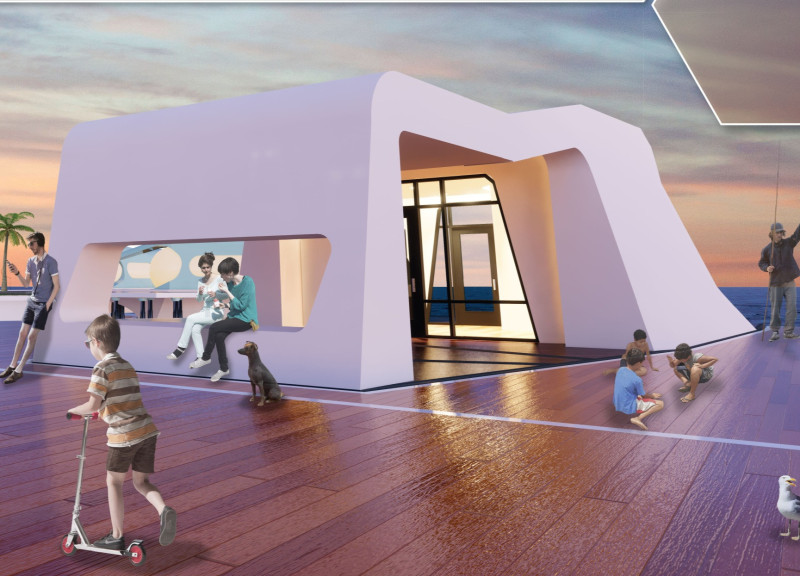5 key facts about this project
The Hexipad project introduces a fresh concept in microhousing, aiming to address pressing issues related to urban living and climate change. Located in Galveston, Texas, a city at risk of flooding and severe storms, the project focuses on creating a sustainable and functional living environment. The design centers around small, efficient homes known as "pills," which are intended to foster a sense of community among residents.
Modularity and Flexibility
The architecture prioritizes modularity, allowing residents to personalize their living spaces. Each Pillbox home occupies 24 square meters, designed to provide necessary amenities without wasting space. The structure is flexible enough to adapt to various living situations, making it appealing to different kinds of households. This adaptability supports changing lifestyles, ensuring that the homes can grow with their occupants.
Community Integration
A key feature of the Hexipad concept is its commitment to community. Residents are invited to take part in volunteer activities, promoting interactions and building social ties. This approach enhances the overall quality of life for individuals living in close proximity to one another. By encouraging participation, the design fosters a supportive environment where people can collaborate and share resources effectively.
Space Efficiency
Inside the Pillbox, every inch of space is thoughtfully planned to maximize usability. The layout includes foldable elements, such as stoves and ovens, which help create an open atmosphere suitable for various daily activities. This careful arrangement allows residents to live comfortably within a compact area while maintaining essential functions typically found in larger homes.
Sustainability in Design
Sustainability is a core principle underpinning the Hexipad initiative. The project utilizes reclaimed materials in construction to lessen environmental impacts and promote responsible sourcing. These materials help create a conscious living space that reflects a commitment to minimizing waste.
In addition to thoughtful material choices, the project features an innovative dual hydraulic/flywheel telescoping system. This technology harnesses wave motion to produce hydraulic fluid, supplying energy for the community. These advancements not only address practical energy needs but also strengthen the ability of the housing community to withstand future challenges.





















































